

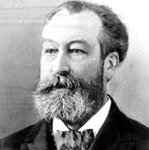


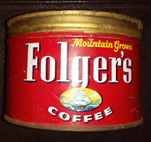

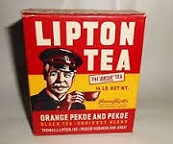
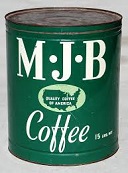









TLW's Coffee-Teascope™ (Coffee-Tea Historyscope) |
By T.L. Winslow (TLW), the Historyscoper™ |
© Copyright by T.L. Winslow. All Rights Reserved. |
Original Pub. Date: July 13, 2016. Last Update: Jan. 30, 2020. |

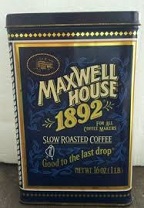
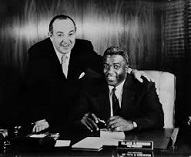



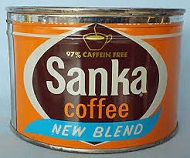

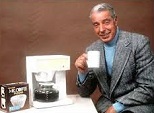
Westerners are not only known as history ignoramuses, but double dumbass history ignoramuses when it comes to coffee and coffee history, and tea and tea history. Since I'm the one-and-only Historyscoper (tm), let me quickly bring you up to speed before you dive into my Master Historyscope.
Coffee is produced by the fruits of the tropical shrub Coffea of the family Rubiaceae, which are rich in caffeine; there are 120+ species; varieties incl. Arabian coffee (most popular, 60% of world production), and Robusta coffee (20%-40%).
Tea is produced by the leaves, leaf buds, twigs, and stems of the evergreen shrub Camellia sinensis, named by Linnaeus after Moravian-born Jesuit missionary Georg Joseph Kamel (1661-1706); varieties incl. white tea, yellow tea (huangcha), green tea, oolong (Chin. "black dragon") tea, dark/fermented tea incl. Pu'er tea, black tea, and kukicha (twig) tea (bocha).
In 2737 B.C.E. tea is allegedly discovered when some leaves accidentally blow into Chinese emperor Shen Nong's pot of boiling water.
In 1115 B.C.E. Ji Dan, duke of Chou (Zhou) in China writes Against Drunkenness, containing the first written definition of tea.
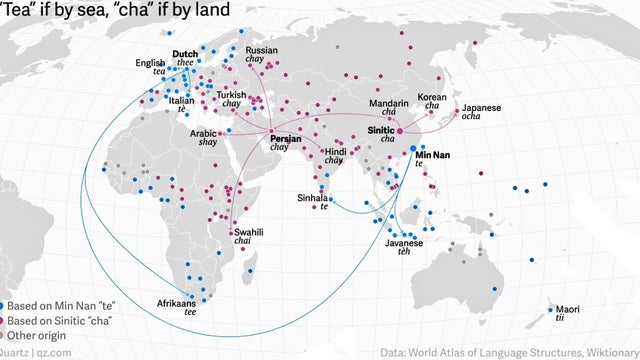
In the 2nd cent. B.C.E. in the reign (-188 to -141) of Han Dynasty emperor Liu Qi, tea is traded by land over the Silk Road, causing the word "chai" for tea to spread; when the Dutch begin trading tea between Asia and Europe by sea in the 17th cent. C.E., they spread the word "tea".
In 59 B.C.E. the oldest written reference to tea.

In 208 C.E. Chinese physician Hua Tuo (Yuanhua) (140-208) dies after becoming the first in China to use anaesthesia during surgery, using wine mixed with cannabis, leaving the first written record of tea drinking, and developing the Exercise of the Five Animals (tiger, deer, bear, ape, crane).
In the 6th cent. C.E. the Japanese begin to practice tea drinking after priests bring it back from China.
About 750 C.E. the N Chinese of the Tang Dynasty begin to practice tea drinking bigtime?
About 750 C.E. coffee berries are allegedly discovered by Arab shepherd Kaldi of Ethiopia, who notices that his goats get friskier after eating them; first mentioned by Marionite Roman prof. Antoine Faustus Nairon in 1671 - thank God for goats?

In 760 C.E. Tang Dynasty writer Lu Yu (Hongjian) (733-804) writes The Classic of Tea (Ch'a Ching) (3 vols.), becoming the first definitive work on cultivation, preparation, and drinking of ch's (tea), and the source of the tea service which Chinese Zen Buddhist missionaries later introduce into Japan; wait until the boiling water has bubbles resembling crystal beads rolling in a fountain before pouring over the leaves.
In 1107 Chinese Song Emperor (1100-26) Huizong of Song (1082-1135) writes Treatise on Tea, the #1 treatise on tea after Lyu Yu's "The Classic of Tea" (760); defines seven criteria for tea competitions, and describes the technique of tea spotting.
In the 13th cent. the brewing of coffee into a beverage (as opposed to a medicine) is discovered by the Arabs, causing coffeehouses to proliferate in Arabia and Turkey, becoming gathering places for the intelligentisia; for the next 4 cents.; it becomes a capital offense to export fertile coffee seeds.
In the mid-15th cent. the first substantiated evidence of coffee drinking is in the Sufi monasteries of Yemen.
In 1475 after coffee arrives in Turkey in 1453, Kiva Han, the world's first coffee shop opens in Constantinople (Istanbul) - Crescentbucks?

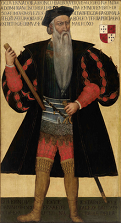
In 1497-9 Vasco da Gama (1460-1524) discovers a sea route to India via the Cape of Good Hope, after which in 1513 Jorge Alvares (-1521) becomes the first Portuguese to land in China, and in 1535 the Chinese emperor permits the Portuguese to settle in Macao at the mouth of the Pearl River; meanwhile on Aug. 24, 1511 the Portuguese under Alfonso de Albuquerque (1453-1515) conquer Malacca on the Malay Peninsula; in 1516 they reach China, sending an ambassador to Peiping (Beijing) in 1517, and reach Japan in 1540.
In the 16th cent. coffee (kahve) reaches Persia from Arabia; after being studied by physicians until they pass it, it spreads throughout the country in rocking chess-playing coffeehouses, displacing tea as the most popular beverage until around 1800.
In 1545 Ottoman sultan Suleiman the Magnificent appoints Sunni Hanafi legal scholar Mehmed Ebussuud Efendi (1490-1574) as grand mufti (until 1574), who goes on to reorganize the Ottoman legal system to put it more under Sharia, but with the sultan's orders given higher standing; he issues several fatwas, incl. ones permitting consumption of coffee and allowing the performance of Karagoz (Karagöz) (Turk. "black eye") AKA Hacivat (Turk. "Haci Ivaz" = Ivaz the Pilgrim) (shadow) plays, featuring educated refined Turk Hacivat and vulgar illiterate Greek peasant Karagoz, who always gets the better of him with his "native wit".
In 1555 Coffeehouses and coffee are introduced to Constantinople by Hakan from Aleppo and Shams from Damascus, which become popular, although some Muslim religious thinkers continue to question the morality of it.
In 1555-9 Italian Venetian geographer Giambattista (Giovanni Battista) Ramusio (1485-1557) pub. Navigatione et Viaggi (Voyages and Travels) (3 vols.), a collection of first-hand accounts of travels by famous explorers incl. Marco Polo, Magellan, Alvar Nunez Cabeza, Niccolo Da Conti et al., containing the first mention of tea in Euro lit. as "Chai Catai" in an account of 16th cent. Persian traveler Chaggi Memet (Haji Mohamed): "He told me that all over Cathay they made use of another plant or rather of its leaves. This is called by those people Chai Catai, and grows in the district of Cathay which is called Cacian-fu [Szechwan]... They take of that herb, whether dry or fresh, and boil it well in water. One or two cups of this decoction taken on an empty stomach removes fever, headache, stomach ache, pain in the side, or in the joints, and it should be taken as hot as you can bear it... And it is so highly valued and esteemed that every one going on a journey takes it with him, and those people would gladly give a sack of rhubarb for one ounce of Chai Catai. And those people of Cathay do say if in our part of the world, in Persia, and the country of the Franks, people only knew of it, there is no doubt that the merchants would cease altogether to buy rhubarb."
In 1560 after becoming the first Roman Catholic missionary in China in 1556, Father Gaspar Da Cruz pub. the first description of Chinese tea in Portuguese: "A drink called ch'a, which is somewhat bitter, red, and medicinal."
In 1565 Italian missionary in Japan Father Louis Almeida writes a letter containing the first news of Japanese tea in Italy, with the soundbyte: "The Japanese are very fond of an herb agreeable to the taste, which they call chia."
In 1567 Russian travelers Ivan Petroff and Boornash Yalysheff return from China, bringing the first news of tea to Russia.
About 1570 the Venetians import coffee from Turkey; in return tobacco arrives in Turkey and Poland; European tobacco cultivation begins in Cuba.
In 1582 the English word "coffee" is coined from the Dutch word koffie, which comes from the Turkish word Kahve, which comes from the Arabic word qahwah.
About 1587 Abd-Al-Qadir Al-Jaziri writes Umadat Al-Safwa fi hill Al-Qahwa, becoming the first known work on the history of coffee; claims that Sheikh Jamal al-Dain al-Dhabhani (-1470), mufti of Aden was the first to use it: "He found that among its properties was that it drove away fatigue and lethargy, and brought to the body a certain sprightliness and vigor."

In 1588 Italian priest-poet-diplomat Giovanni Botero (1544-1617) pub. On the Causes of Greatness in Cities (Delle Cause Della Grandezza Delle Citta), which claims that cities grow when their nutritive virtue is greater than their generative virtue, and vice-versa; mentions the Chinese habit of tea drinking: "The Chinese have an herb from which they press a delicate juice which serves them instead of wine. It also preserves the health and frees them from all those evils that the immoderate use of wine doth breed in us."
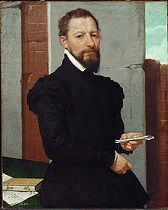
In 1588 Italian Jesuit writer Giovanni Pietro (John Peter) Maffei (1533-1603) pub. Historica Indica in Rome, talking about tea drinking in Japan, with the soundbyte: "The Japanese have as yet no use for grapes, but they make a kind of wine from rice. But that which before all they delight to drink is water almost boiling, mingled with the powdered chia."
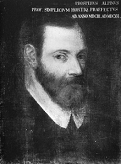
In 1591 Italian physician-botanist Prospero Alpino (1553-1617) pub. De Medicina Egyptiorum in Venice, becoming the first account of the coffee plant pub. in Europe, describing a coffee tree he saw in the garden of the capt. of the Janissaries in Constantinople.

In 1596 Flemish physician-botanist Charles de l'Ecluse (l'Écluse) (L'Escluse) (Carolus Clusius) (1526-1609) receives some coffee beans from a friend in Italy, becoming the first coffee beans to cross the Alps - I had another sneeze and blew my nose?
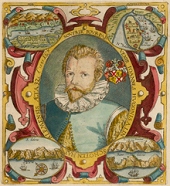
In 1596 Dutch merchant Jan Huyghen van Linschoten (1563-1611) pub. Reys-gheschrift vande navigatien der Portugaloysers in Orienten (Itinerario) (Travel Accounts of Portuguese Navigation in the Orient) (English trans. "Iohn Huighen van Linschoten his Discours of Voyages into ye Easte & West Indies" pub. in 1598), detailing his travels in the East Indies, with the first maps of the area, esp. India, obtained by ripping-off the secret charts of his patron the Portuguese viceroy, allowing the English and Dutch to learn the passage through the Malacca Strait via the Sunda Strait, enabling them to set up the British East India Co. and the Dutch East India Co. to break the Portuguese monoply; contains descriptions of tea drinking in Japan: "Their manner of eating and drinking is: everie man hath a table alone, without table-clothes or napkins, and eateth with two pieces of wood like the men Chino: they drink wine of Rice, wherewith they drink themselves drunke, and after their meat they use a certain drinke, which is a pot with hote water, which they drink as hot as ever they may indure, whether it be Winter or Summer... The aforesaid warme water is made with the powder of a certaine hearbe called Chaa, which is much esteemed, and is well accounted among them."
In the first decade of the 17th cent. European cultivation of tobacco begins in Brazil; coffee first enters Europe through the port of Venice; the consumption of both begin to skyrocket in Europe, taking over by the end of the cent. except in snooty England; Pope Clement VIII gives coffee his blessing, saying that it's unfair to "permit Muslims to monopolize it".
In 1602 Spanish Jesuit missionary to China (since July 20, 1597) Father Diego de Pantoja (Didaco Pantoia) (1571-1618) writes a work on Chinese etiquette, with the soundbyte: "When they have ended their salutations, they straightway cause a drink to be brought, which they call ch'a, which is water boyled with a certaine herbe, which they much esteeme... and they must drink of it twice or thrice."
In 1610 the Dutch East India Co. introduces the term "share"; a ship brings lacquer furniture to Holland, creating a demand for it; making use of the route info. from the 1596 book by Jan Huyghen van Linschoten, a Dutch ship brings the first bale of green tea leaves to Amsterdam from Macao, after which the Dutch scramble to get into the tea trade.
On June 27, 1615 the first English language reference is made to tea by R. Wickham, agent of the English East India Co. on Hirado Island, Japan in a letter to his colleage Mr. Eaton in Macao, asking for "the best sort of chaw".
In 1615 coffee first enters Europe through the port of Venice; the consumption of coffee begins to skyrocket in Europe, taking over by the end of the cent. except in snooty England.
Bad year for the Portuguese? In 1615 the Dutch seize the Spice Islands (Moluccas) from the Portuguese.
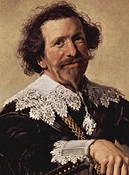
In 1616 Dutch East India Co. merchant Pieter van den Broecke (1581-1640) smuggles arabica coffee plants out of the Yemeni port of Mocha back to Amsterdam, where they are cultivated in Amsterdam Botanical Garden; in 1658 the Dutch transport them to Ceylon, S India, Java, and Suriname, becoming the first Europeans to cultivate coffee commercially, becoming Europe's main suppliers, creating an oversupply that causes them to focus on their plantations in Java; in 1617 van den Broecke makes a drawing of a dodo on Mauritius.

On Sept. 10, 1623 Ottoman sultan (1617-18, 1622-23) Mad Mustafa I (b. 1591) abdicates in favor of his nephew (son of Ahmed I and Greek Sultana Kosem Sultan) Murad (Murat) IV (the Cruel) (1612-40), and is put back in his happy cage; Murad IV becomes Ottoman sultan #17 (until Feb. 8, 1640), becoming known for his height and strength, wielding a 132-lb. mace and 110-lb. 2-hand broadsword, and restoring the authority of the state with brutal methods, banning alcohol, tea, and coffee in Constantinople, then dressing up in civilian clothes at night and policing the taverns personally, killing offenders on sight with his terrible swift sword; meanwhile he is a lush himself - smells like the real thing?
In 1624 the first major shipment of coffee beans arrives in Venice.
In 1629 (1645?) the first coffeehouses open in Venice, Italy.
In 1634 smoking is outlawed in Russia by Tsar Michael I.

In 1636 according to police commissioner Delamarre, tea is introduced in Paris.
In 1640 after obtaining 84K lbs. in Mocha, Yemen, German merchant Johann Siegmund Wurffbain (1613-61) becomes the first to sell Mocha coffee beans commercially in Holland, growing wealthy and pub. one of the first travellers' guides to the East Indies; meanwhile tea begins to be used in The Hague, spreading to Paris in 1648, and Germany by about 1650.
And the Dutch become the Spice Girls of Europe? On Jan. 14, 1641 with help from the sultan of Johore, the Dutch take possesion of the Portuguese fort of Melaka (Malacca) (held since 1511), allowing them to control the tea trade; meanwhile after years of bloodshed the Dutch oust the Chinese from Formosa (Taiwan) to control the Sika deer trade, and rule it until 1661.
In 1643 an immigrant from the Levant opens a coffeehouse in Paris, which goes bankrupt.
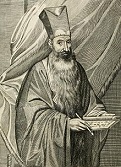
In 1643 after serving as a missionary in China since 1610, Portuguese Jesuit Father Alvaro (de) Semedo (1585-1658) pub. The History of That Great and Renowned Monarchy of China. Wherein all the particular Provinces are accurately described: as also the Dispositions, Manners, Learning, Lawes, Militia, Government, and Religion of the People. Together with the Traffick and Commodities of that Country; English tr. pub. in 1655; incl. a description of the Chinese tea ceremony at the Han Pass, initiated by Yin Hsi.
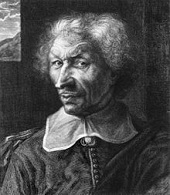
On Mar. 22, 1648 French physician Guy (Gui) Patin (1601-72) writes a letter about tea drinking in Paris, calling it "the impertinent novelty of the century", mentioning the new book by Dr. Philibert Morisset titled Ergo Thea Chinesium, Menti Confert (Does Chinese Tea Increase Mentality?), pub. in Paris, praising tea as a panacea, with the soundbyte: "One of our doctors, named Morisset, who is much more of a braggart than a skilful man... caused a thesis on tea to be published here. Everybody disapproved of it; there were some of our doctors who burned it, and protests were made to the dean for having approved the thesis. You will see it and laugh at it"; the work draws so much ridicule from physicians that nobody else tries it for years.
In the 1650s due mainly to the super intellectual achievements of Galileo and Newton, the Age of Enlightenment (Reason) begins in W Europe (until 1789), with coffeehouse and salon thinkers (philosophes) backed by the Masonic movement challenging the authority of the Church and promoting reason and individualism, causing more and more brain men to vote with their feet by leaving the ranks of churchmen and joining the ranks of scientists.
About 1650 merchants from Marseilles, France begin importing coffee beans from the Levant, going on in a few years to import coffee from Egypt, causing merchants in Lyon to follow suit.
In 1652 the first coffeehouse is opened in England in Oxford by Jewish man Jacob in St. Peter Parish; another is opened in St. Michael's Alley in Cornhill, London by Armenian-Greek Pasqua Rosee (Rosée), servant of Turkish goods trader Daniel Edward; a coffeehouse is called a penny univ. since admission is a penny and incl. a cup of coffee or a pot of tea; within a decade there are 80+ coffeehouses in London, growing to 2K-3K by 1700.
In 1654 Queen's Lane Coffee House in Oxford, England is opened, surviving to modern times.
In 1657 Vienna becomes a cultural center, and in 1683 gets coffee to boot.
About 1657 Thomas Garway (Garraway) of London purchases a large quantity of tea from China, and pub. Of the Tea Leaf, claiming it as a cure from A-Z, hooking the English on it, then opens Garraway's Coffeehouse in 1669, becoming one of the top auction houses in London - they get garwayed?
In the 1660s brothers Nicolas Mariage and Pierre Mariage are sent by the French East India Co. to Madagascar, Persia, and India, after which Nicolas is sent by Louis XIV to sign a trade agreement with the shah of Persia to buy tea; in 1843 their descendants open a wholesale tea shop in Paris.
On Sept. 13, 1660 Charles II's Navigation Act of 1660 continues Cromwell's mercantilist policy in spades, making England the sole outlet for "enumerated" goods not produced there incl. tobacco, tea, cotton, and sugar, and requiring crews to be three-quarters English.

On Sept. 25, 1660 diarist Samuel Pepys (1633-1703) makes the first English reference to tea drinking.

On May 21, 1662 I'm-too-sexy-for-my-hat Charles II of England marries unpopular Roman Catholic Catherine of Braganza (1638-1705), daughter of King Joao (John) IV of Portugal, who arrived in Portsmouth, England on May 13/14 wearing Portuguese dress; the public service in the chapel of Domus Dei is Anglican, the secret one Roman Catholic; her dowry of £300K is sweetened by the ports of Tangiers (under Moorish control) and Bombay, as well as free trade with a number of Portuguese possessions; on Sept. 30 they enter London with a large procession incl. Portuguese bagpipe players, meeting matchmaker Henrietta Maria, the Queen Mother, who wants her charms to tame him, only to see him continue hooking up with his mistresses, aided by her Old Maid status (23-y.-o.) and three miscarriages; she goes on to introduce Portuguese goods to the court incl. cane, lacquer, cotton, and porcelain, hooking Charles II on tea and causing him to introduce it to the English court.
In 1663 tea is selling in London for 60 shillings/lb. vs. 6 for coffee; by 1700 it begins to be sold by grocers in London as well as tea shops, which are frequented by women as well as men, along with 500+ coffeehouses; by 1750 tea becomes Britain's favorite lower class beverage.
In 1663 regular imports of coffee beans from Mocha, Yemen to Holland begin, causing London coffeehouse owner Pasqua Rosee to sell coffee in Holland next year before opening the first coffeehouse in Holland in The Hague, after which more are opened in Amsterdam and Haarlem.
In July 1669 after visiting Louis XIV in Versailles and getting banished for refusing to bow to him, Soleiman Agha, ambassador of Ottoman sultan Mehmed IV visits Paris bringing a large quantity of coffee beans, serving coffee to guests and donating beans to the royal court, establishing the custom of coffee drinking in Paris by the time he leaves in May 1670, along with an enthusiasm for all things Oriental incl. turbans, caftans, cushions, and carpets.
In 1670 while returning from Hajj in Mecca, Indian Sufi Baba Budan from Karnataka smuggles seven coffee beans from Mocha, Yemen, planting them in the Baba Budan Hills of Chikmagulur; coffee plantations go on to extend S to Kodagu and the hills of S India incl. Karnataka, Kerala, and Tamil Nadu, becoming the finest shade-grown coffee in the world.
In 1671 a coffeehouse opens in Marseilles, France, spawning imitators.
In 1671 Antoine Faustus Nairon pub. De Saluberrima potione Cahue seu Cafe nuncupata Discurscus in Rome, becoming the first mention of Kaldi, the 9th cent. Ethiopian goatherd who allegedly discovers coffee.
In 1672 the first Parisian coffeehouse (cafe) is opened at the Saint-Germain Fair by an Armenian-Greek named Pasqua Rosee (Rosée), who obtains a citywide coffee monopoly (until 1686) and opens another one in the Quai de L'Ecole, which fails, after which he moves to London.
In 1674 coffee arrives in Sweden; it doesn't become fashionable until the turn of the cent.
By 1675 there are 3K+ coffeehouses in England.
In 1679 the London Tea Auction is founded on Leadenhall St. in London, England by the East India Co., moving to Mincing Lane in 1834; it closes on June 29, 1998.
In 1679 the first German coffeehouse opens in Hamburger, er, Hamburg.
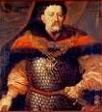


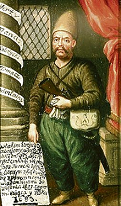

A touch of fame for a Pollock? On July 14, 1683 the Great Austrian-Turkish War (ends 1699) and the Polish-Turkish War (ends 1699) begin as 140K Turks with 300 cannon under Merzifonlu Kara ("Black") Mustafa Pasha (1634-83) begin the Second Siege of Vienna, held by only 20K troops under Count Ernst Rudiger von Starhemberg (1638-1701), culminating on Sept. 11 (the original 9/11) with the epic Battle of Vienna (Kahlenberg); the Christians hold out until Sept. 12 as sappers undermine the city walls, when Jan III Sobieski (1624-96) of Poland swallows his pride at the thought of the Ottoman border being so close to Cracow and allies with HRE Leopold I and duke Charles of Lorraine (1643-90) (who defeated Imre Thokoly of Hungary at Bisamberg 5km NE of Vienna in Aug.) to become CIC of the 84K-man combined armies and raise the siege with 3K Polish mounted Winged Hussars plus 34K Polish troops, 18.5K Austrians, 10.5K Bavarians, 9K Saxons, and 9.5K Swabian and Franconian troops, who stage the largest cavalry charge in history, making Sobieski a hero of Christendom, and marking the end of Islamic military conquests in Europe until ?; after the battle, Sobieski utters the soundbyte "Venimus, Vidimus, Deus Vincit" (We Came, We Saw, God Won); the Christian battle cry of "Maria Help" is amended at the suggestion of Johann Georg III of Saxony (who commands the left wing) to "Jesus and Maria Help", causing Sobieski to utter the soundbyte "The elector of Saxony is an honest man with a straight heart", after which Johann George III accompanies the HRE on his entry to Vienna, then abruptly leaves with his troops after they are treated like merde for being Protestants (kiss my ass, kiss your ass, happy Hanukkah?); after the liberation of Vienna, HRE Leopold I meets with Jan Sobieski in Schwechat near Vienna, which commemorted by an obelisk; Starhemberg also becomes a star, and is promoted to field marshal, but is severely wounded in 1686 at the siege of Buda and gets a desk job as pres. of the Hofkriegsrat; the V marks the hegemony of the Hapsburgs; on Dec. 25 Mustafa Pasha is strangled in Belgrade by the Janissaries and his head sent to sultan Mehmed IV in a velvet bag; too bad, Imre Thokoly, who fights with the Turks gets blamed by them for the whole D, and after rushing to Edirne to defend himself in front of the sultan, he flops and tries to make up with Sobieski, promising to lay down his arms if he is recognized as Protestant prince of Upper Hungary, but Sobieski demands unconditional surrender, and he has to fight on his own with neither side trusting him; the Turks leave massive stores of loot, with Sobieski uttering the soundbyte "Ours are treasures unheard of... tents, sheep, cattle and no small number of camels... It is a victory nobody ever knew of, the enemy now completely ruined, everything lost for them"; the first coffeehouse is opened in Vienna by Polish officer Jerzy Franciszek Kulczycki (1640-94) (known for escaping from the besieged city to get help) after the withdrawing sackers leave coffee sacks behind, introducing the custom of adding sugar and milk (melange); the first Vienna coffeehouse is really opened by Armenian Johannes Theodat in 1685?; like a rose that blooms then starts to decay, the Turkish Empire in Europe reaches its maximum extent, stretching from beyond Budapest on the Danube River, the Carpathians, and the headwaters of the Bug River to the Black Sea, Aegean, and Ionian Seas, with only Dalmatia (ruled by Venice) and Montenegro (semi-independent) as exceptions; after this, the Islamic world fails to keep pace with the West, incl. constructing public clocks, implementing standardized linear measurements, and modernization in general, compounded by pervasive autocracy.
In 1685 French merchant Philippe Sylvestre Dufour pub. Traitéz Nouveaux et Curieux du Café, du Thé et du Chocolat (New and Curious Treatises on Coffee, Tea and Chocolate); 2nd ed. 1688: one of the first books in French to address tea, extolling the leaf for its ability to cure headaches and aid digestion, offering prescriptions.
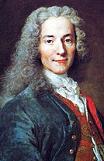
In 1686 Cafe Procope, named after French historian Procopius is opened in Paris by Sicilian chef Procopio Cuto (Cutò) (Francesco Procopio dei Coltelli) (1651-1727), serving that newfangled coffee along with sorbets in porcelain cups by waiters in exotic Turkish garb; it soon becomes a men-only club, the meeting place for French intelligentsia until the mid-1800s, the first literary coffee shop, and later the oldest Parisian restaurant to survive to modern times; Voltaire (1694-1778) later sits there all day drinking 40-50 cups of coffee mixed with chocolate; other celeb patrons incl. Honore de Balzac, Pierre Beaumarchais, Denis Diderot and Jean le Rond d'Alembert (who conceived of the Encyclopedie there), Victor Hugo, Jean-Jacques Rousseau, Benjamin Franklin, Thomas Jefferson, John Paul Jones, Napoleon Bonaparte, Henry Wadsworth Longfellow, and Oscar Wilde; a sign above the door later reads: "Cafe a la Voltaire", with the soundbyte: "Ice cream is exquisite. Pity it isn't illegal" being attributed to him.
Now that England is assuredly Protestant, we can take bets? In 1686 Edward Lloyd's Coffee House, owned by Edward Lloyd (1648-1713) opens on Tower St. in London, and underwriters begin meeting regularly there, moving in Dec. 1691 to Lombard St. and becoming Lloyd's of London; in 1774 the members form a committee and move to the Royal Exchange on Cornhill, becoming the Sciety of Lloyd's; the word "tips" comes from a sign placed there that reads "To Insure Prompt Service"?

In 1695 Don Saltero's Coffee House and Curiosity Museum is founded in Chelsea, London by James Salter, who fills it with weird taxidermy (crocodiles, turtles, snakes) from the collection of scientist Sir Hans Sloane (1660-1753), making fans of Sir Isaac Newton and Benjamin Franklin.
On Aug. 3, 1700 the French ship Amphitrie returns to China with a cargo of silk, porcelain, and tea, causing a boom that increases ships to China 10x.
In 1711 the first commercial shipment of coffee beans from the Dutch East India plantations in Java arrives in Amsterdam; it is less than 1K lbs. - like with any drug, start them out with free samples?
In 1712 Button's Coffee House is founded in London by Daniel Button, attracting brainy Whigs incl. Joseph Addison, fostering free journalism.

In 1713 French Bourbon Sun King (1643-1715) Louis XIV (the Great) (1638-1715) is presented with a coffee tree, and uses sugar as an additive in coffee for the first time.
In 1714 the Princess of Palatine remarks that Chinese tea is as fashionable in Paris as chocolate is in Spain; meanwhile tea is introduced to the Am. colonies; French tea lovers incl. Louis XIV, Cardinal Mazarin, royal minister Pierre Seguier, playwright Racine, and writer Madame de Genlis; later the salonist Marguerite de la Sabliere (Sablière) (Hessein) (1640-93) introduces the fashion of adding milk (to prevent her eggshell teacups from cracking?), which is quickly adopted by the English.
In the 1720s black tea (Bohea) (Wu-i) passes green tea in popularity in England, with sugar and milk becoming popular additives early on; by this time maritime Euro trade with China is dominated by the exchange of silver for tea; by 1750 tea is the British nat. drink.

In 1720 French naval officer Gabriel Matthieu Francois D'ceus de Clieu (1687-1774) allegedly smuggles coffee plans from the Jardin Royal des Plantes in Paris to Martinique, sharing his rationed water with the plants, beginning the South Am. cultivation of coffee; in 1727 the Brazilian coffee industry is founded; cultivation is slow until independence in 1822, after which massive areas of rainforest are cleared near Rio de Janeiro and Sao Paulo, making Brazil the largest coffee producer on Earth by 1852 (until ?); in 1737-52 de Clieu becomes gov. of Guadeloupe.
In 1720 Caffe (Caffè) Florian on St. Mark's Square in Venice is founded, becoming Italy's oldest coffeehouse to survive to modern times.
In 1721 the first coffeehouse opens in Berlin, Germany.
In 1730 after being ordered by the tsar at the conclusion of the Treaty of Nerchinsk on Nov. 22, 1689, the Siberian Route (Tea Road) (Moscow Highway) (Great Highway) from Russia to Siberia to China is begun to replace the Siberian River Routes, going on to transport up to 65% of China's tea exports (70.2K tons in 1915), esp. the Russian Caravan brand; the Siberian Route is not completed until the 1850s.

In 1732-5 German Baroque composer Johann Sebastian Bach (1685-1750) composes Schweigt stille, plaudert nicht, BWV 211 (Be still, stop chattering) AKA the Coffee Cantata, telling an amusing tale of addiction to coffee, debuting it at the coffee house in Leipzig; "If I couldn't, three times a day, be allowed to drink my little cup of coffee, in my anguish I will turn into a shriveled-up roast goat".
In 1750 tea is introduced to Sao Miguel Island, Azores, becoming home to the Gorreana tea co. in 1883, becoming the oldest tea plantation in Europe.

In 1753 Swedish botanist Carl Linnaeus (1707-78) first distinguishes plants via species and genera, causing him to become known as "the Father of Taxonomy"; gives the tea plant a scientific name.
In the 1760s the tea trade between England and Closed Door China is established, causing tea consumption to grow rapidly after 1673; too bad, Britain taxes tea imports at 80%-100% in London auctions, causing tea smuggling to boom, providing better quality and wider assortments along with lower prices, and expanding import channels along the coasts instead of just London from smuggling ports in Normandy, Britany, Amsterdam, Copenhagen, and Ostend.
By 1763 Venice has 218 coffee shops.
In 1763 the first living tea plant is brought to Europe in Uppsala, Sweden.



In Feb. 1764 English essayist Dr. Samuel Johnson (1709-84) and English artist Joshua Reynolds (1723-92) found the (Literary) Club at Turk's coffeehouse in London with nine members, incl. Sir Joshua Reynolds (1723-92), David Garrick (1717-79), Oliver Goldsmith (1730-74), Edmund Burke (1729-97), Edward Gibbon (1737-94), Adam Smith (1723-90), and James Boswell (1740-95); Johnson meets multilingual Welsh writer Hester Lynch Salusbury(1741-1821), who married Southwark brewer Henry Thrale (1724-81) in 1763, and for the next 16 years they all spend weekends on the Thrale estate in Streatham Park; too bad, when Thrale dies she marries Italian musician Gabriel Mario Piozzi (1740-1809) in 1784 (whom Johnson doesn't like) and travels in Italy and vacations in Bath, keeping the Thraliana diary, which is not pub. until 1942, but is used for Thrale's Anecdotes of the Late Samuel Johnson (Mar. 26, 1786) - I don't care how much it may storm, I got my love to keep me warm?
In 1771 the London Coffee House is founded in Fell's Point, Baltimore, Md., becoming the only pre-rev. coffeehouse in Am., becoming a hotbed of rev. activity.
In 1764 bicerin (It. "small glass"), a bitter coffee drink with dark chocolate and cream with a jealously-guarded secret recipe is invented in Turin, Italy.
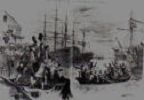




The political protest that turns Americans into coffee drinkers? On Dec. 16, 1773 (Thur.) at 4 p.m. about 50 colonials and members of the Committee of Correspondence meet at the home of Boston Gazette ed. Benjamin Edes (1732-1803), who serves them from an ever-full China rum punchbowl (replentished by his son Peter) (later given to the Mass. Historical Society); about 6 p.m. Samuel Adams says "This meeting can do nothing more to save the country", and the drunken bums, er, patriots leave to get more drunk at the Green Dragon Tavern on Union St. in North End, Boston (founded 1743), home of the Freemason Lodge of St. Andrew, then dress up in Edes' office and stage the Boston Tea Party during the moonlit night, as a mob of 200 Am. colonists, incl. Samuel Adams (1722-1803), John Hancock (1737-93), Thomas Wells (a blacksmith), and Samuel Smith (1714-85) (grandfather of Mormonism founder Joseph Smith Jr.) (not really - just Mormon propaganda?) disguised as negroes and Mohawks with soot-darkened faces (the English taxes were based on a desire to make the Americans pay their expenses in the French and Indian War - get it?) gather at Griffin's Wharf, then board and dump three shiploads (342 chests) (45 tons) of tea valued at £18K into the S end of Boston Harbor (between modern-day Congress St., Atlantic Ave., and Northern Ave.), while another 2K-8K people urge them on from the docks; the ships they take over are the Dartmouth, Eleanor, and Beaver (dart eleanor beaver mouth jokes here?); the William was destroyed in a storm and didn't make it; four days later Paul Revere gallops into New York City with the news, and 18-y.-o. Charlestown, West Indies-born Alexander Hamilton (1755-1804), a student at King's (later Columbia) College in New York pub. his first political piece in John Holt's New-York Journal, titled Defence and Destruction of the Tea; Boston merchants are not happy with the wanton destruction of property by the rebels, and Ben Franklin calls on Boston to pay for the tea and apologize to prevent the Brits from closing the port, but instead of trying to undermine the credibility of the radicals and defuse the situation, mad king George III writes to Lord North that "The colonists must either submit or triumph", and instructs him to discipline all of Boston.

On Sept. 13, 1777 Prussian king (1740-86) Frederick II the Great (1712-86) issues his Coffee and Beer Manifesto, addressed to the provinces of Pomerania and Brandenburg, complaining of the increasing popularity of coffee over beer, with the soundbyte: "It is disgusting to notice the increase in the quantity of coffee used by my subjects and the amount of money that goes out of the country in consequence. Everybody is using coffee. If possible this must be prevented. My people must drink beer. His majesty was brought up on beer and so were his ancestors and his officers and soldiers. Many battles have been fought and won by soldiers nourished on beer, and the king does not believe that coffee-drinking soldiers can be depended on to endure hardship or to beat his enemies in case of the occurrence of another war"; after the govt. establishes a monopoly on coffee roasting and jacks up the price until only the wealthy can afford it, the proclamation works, and coffee is permanently eclipsed by beer as the drink of the Prussian people.




Just a little bit, just a little bit, sock it to me sock it to me? On June 17, 1789 after the king's financial adviser Jacques Necker (1732-1804) (wrong name for this country?) rigs the voting by rank to nullify the third estate's advantage, Abbe Emmanuel Joseph Sieyes (Sieyès) (1748-1836), author of of the hit CD What Is the Third Estate? makes a motion, causing it to bolt and meet to form a new constitution, declaring itself the beat-me-heat-me-come-on-eat-me Nat. Assembly, and inviting the other estates to join, which causes king (since May 10, 1774) Louis XVI (1754-93) on June 20 to lock them out and suspend meetings for three days, which doesn't phase them, because they got cat scratch fever and meet in an indoors tennis court, swearing the Tennis Court Oath to stay in session until they create a new constitution; on June 23 the king continues to try to stop them, ordering each estate to meet separately, and Honore (Honoré) Gabriel Riqueti, Comte de Mirabeau (1749-91) (elected for both Marseille and Aix) steps forward and answers royal messenger Henri Evrard, Marquis de Dreux-Breze (Dreux-Brézé) (1762-1829) with the truly breezy immortal Mr. Saturday Night Special soundbyte: "If you have orders to remove us from this hall, you must also get authority to use force, for we shall yield to nothing but to bayonets"; the 10-year 7-mo. 11-day French Rev. (ends 1799) begins as 24M French citizens kept down by 400K aristocrats upend the entire social structure, infecting the world with incurable dreams of equality that overtake the milder Am. Rev.; on June 27 after the three estates unite, Louis XVI orders the rumps of the first two estates to join them, and Comte de Mirabeau emerges as leader; although Louis XVI is waffling, his wife Marie Antoinette makes him take the hard line, talking him into sending troops from Versailles to surround Paris in an obvious plan to you know what; the aristocratic favorite drink tea becomes unpopular for the next 50 years.
In 1810 the first Chinese tea plants are introduced in Taiwan.
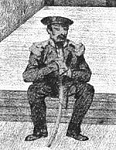
In 1813 Spanish jack-of-all-trades Don Don Francisco de Paula Marin (Marín) Grassi (1774-1837) (aide to King Kamehameha I, who helped him get Euro military weapons for his V in 1795, and was rewarded with land near modern-day Pearl Harbor, and later acts as the king's royal physician on his deathbed) cultivates Hawaii's first pineapple crop and imports arabica coffee trees to the Hawaiian island of Oahu, planting Hawaii's first grapeyard in 1815 and producing its first wine and brandy, going on to plant the first cotton, mangoes, and oranges, distill sugar cane into rum, and brew beer, also raising some of Hawaii's first horses and cattle; in 1828 coffee plants are transplanted to the 60-mi. Kona District of W Hawaii along Mauna Loa and Hualalai volcanoes.
On Sept. 27, 1823 after his mother Keopuolani dies on Sept. 16, 6'0" Hawaiian king (since May 20, 1819) Kamehameha II makes up his mind to sail for England to discuss the Russian problem with George IV, followed by France to seek another alliance against the Russkies, and in Nov. he and his queen Kamamalu set sail on the British whaling ship L'Aigle (Fr. "The Eagle") under Capt. Valentine Starbuck, becoming the first foreign state visit by a Hawaiian king, making an unscheduled detour and arriving in Rio de Janeiro next Feb. to meet Emperor Pedro I (first visit by a non-Euro monarch to a Latin Am. country), staying for 18 days before arriving in Portsmouth, England on May 17, where they become a big curiosity with the press, attending a reception with 200 guests held in their honor next May 28, then touring London incl. Westminster Abbey (where the Hawaiian king refuses to set foot for fear of desecrating the burial place of kings), attending the Royal Opera House in Covent Garden on May 31, the Theatre Royal in Drury Lane on June 4, and the Royal Military Asylum on June 5, where they contract measles, the queen dying on July 8 and the king on July 14 before they can meet with George IV.; while in Brazil the Hawaiians visit coffee plantations and taste their first coffee, causing several coffee plans to be send to Francisco Paulo de Marin, which all fail, after which an Ethiopian variety introduced by Kamehameha's son Poke thrives, becoming Kona coffee; while in Brazil, royal brats Poki (Boki) and Kalanimoku go skinny-dipping on a beach, shocking some women, but Pedro I smooths things over.

On Nov. 15, 1830 Wellington's govt. is defeated in a vote in the House of Commons, and William IV asks Whig leader Charles Grey, 2nd Earl Grey (Viscount Horwick) (1764-1845) to form a new govt., and he becomes British PM (until 1834), ending 60 years of Tory control of the Commons, receiving a gift of Earl Grey Tea from a Chinese mandarin, containing the key ingredient of oil of bergamot (cross between pear lemon and Seville orange).
In 1834 the British discover tea plants growing in Assam, NE India, incorporating the hilly forested Meghalaya (Sans. "abode of clouds") (wettest region of India) into Assam in 1835.
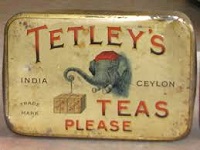
In 1837 Joseph Tetley & Co. is founded in Yorkshire, England by pack horse vendor brothers Joseph Tetley and Edward Tetley, selling orange pekoe and pekoe blends, along with Earl Grey tea; in 1856 they move to London; in 1953 they becomes the first co. in the U.K. to sell tea in tea bags; they go on to become the largest tea co. in the U.K. and Canada, and 2nd largest in the U.S.; in 2000 the co. is purchased by the Tata Group.


In 1850 Nantucket, Mass.-born carpenter James Athearn Folger Sr. (1835-89) begins roasting coffee beans in Gold Rush San Francisco, founding J.A. Folger & Co. in 1872, which packages the "mountain grown" coffee in red cans; in 1965-86 actress Virginia Christine plays Swedish housewife Mrs. Olson; in 1984 the slogan "The best part of waking up is Folgers in your cup" is introduced - so the label says?
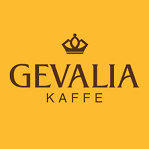
In 1853 Gevalia Co. is founded by Victor Theodore Engwall in Gavle (Gävle), Sweden, becoming the largest coffee roastery in Scandinavia, with a royal warrant of appointment from the king of Sweden, going on to offer mail order delivery service to North Am. in 1983, growing to 40 different coffee and tea blends by Feb. 2007; in 2015 tea sales are discontinued; in 1971 it is sold to General Foods, which is acquired by Kraft Foods Group.
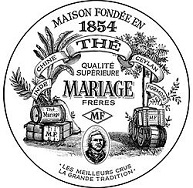
On June 1, 1854 Mariage Freres (Frères) (Mariage Brothers) gourmet tea co. is founded in Paris, France by brothers Henri Mariage and Edouard Mariage to satisfy the new demand for everything English incl. tea; in 1860 they introduce Chocolat des Mandarins, a tea-chocolate blend, going on to becoming the oldest tea co. in France.


In 1862 Chase & Sanborn brand coffee is introduced in Boston, Mass by Caleb Chase (1831-1908) and James Solomon Sanborn (1835-1903), becoming the first roasted coffee shipped in sealed tins; in 1929 it is acquired by Standard Brands, which in 1981 merges with Nabisco, which sells it to Kraft-General Foods in 1987, which sells it in 1984 to Hill Bros., followed in 1984 by Nestle, Sara Lee in 1999, and Massimo Zanetti Beverage Group in 2006.
In 1865 John Arbuckle and Charles Arbuckle of Pittsburgh, Penn. purchase the new self-emptying coffee bean roaster of Jabez Burns, and begin selling pre-roasted coffee in 1 lb. paper bags, calling it Ariosa, which becomes a hit with Am. West cowboys, and is later copied by James Folger; in 1905 John Arbuckle invents the Yuban blend of Arabica beans selected from the freshest shipments from South Am.; in ? the brand is acquired by Kraft Foods.
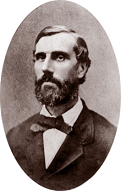
In 1868 after coffee trees brought to Kona, Hawaii Island in the late 1820s by Protestant missionaries of Kahikolu Church produce coffee of uneven quality, Lancaster, England-born merchant Henry Nicholas Greenwell (1826-91) establishes the Kona coffee brand, which is honored at the 1873 Vienna World's Fair and the 1876 Philadelphia Centennial Exposition; in 1882 Samuel Reverend Ruggles introduces Brazilian coffee to the Kona district.
In the 1870s a fungus kills the coffee trees in Sri Lanka, causing them to be replaced with tea bushes (Camellia japonicus).

In 1878 Hills Brothers Coffee (originally Arabian Coffee and Spice Mills) is founded in San Francisco, Calif. by the three sons of clipper shipbuilder Austin Hills (1823-1905), incl. Austin Herbert Mills (1851-1933), Earnest Hills, and Reuben Wilmarth Hills I (1856-1934); in 1900 they begin selling their roasted coffee in vacuum-sealed cans, incorporating in 1906, and moving to a Romanesque-revival bldg. on the Emarcadero designed by George W. Kelham in 1926; in 1906 they begin using a logo of an Arab named Taster drinking coffee, which in 1990 is replaced by the original founders; during WWII they replace the cans with glass jars; in 1984 they acquire Chase & Sanborn; in 1985 the brand is acquired by Nestle, who sells it to Sara Lee in 1999, which sells it in 2006 to Massimo Zanetti Beverage USA.

In 1880 after breaking off his affair with fellow poet Paul Verlaine in 1873, then moving to London, Java, and Cyprus, gay French poet Jean Nicolas Arthur Rimbaud (1854-91) moves to Aden, Yemen to work for the Bardey Agency, moving to Harar, Ethiopia to run its offices before quitting to become a merchant in coffee and fiemarms, helping arm the Negus of Shewa, who later becomes Emperor Menelik II, and becoming friends with the Gov. of Harar Makonnen Wolde Mikael, father of future emperor Haile Selassie, becoming the first Euro to export Ethiopian coffee from Harar, the first to do business there, and the 3rd to set foot in the city.

In 1881 MJB brand coffee co. is founded in San Francisco, Calif. by German Jewish immigrant Max J. Brandenstein (1860-1925) and his brothers Charlie, Eddie, and Mannie; Mannie later changes his name to Bransten, and in 1910 launches the "MJB Coffee Why?" ad campaign, building an "ultramodern" coffee house at the 1915 Panama-Pacific Internat. Exposition featuring a giant cup and saucer on the roof with an illuminated sign reading "WHY"; in 1985 it is acquired by Nestle; in 1999 Sara Lee Corp. acquires MJB, Hills Brothers, and Chase & Sanborn from Nestle, which in 2006 sells them along with Chock Full O'Nuts to Massimo Zanetti Beverage USA; ad slogan: "You can't make a bad cup of MJB".


In 1890 after opening a shop in Glasgow, Scotland in 1871 and expanding to 200 shops by the 1880s, taking advantage of falling tea prices to set up his own wholesale distribution network (bypassing London's Mincing Lane) in 1888 to market tea at low low prices to the working class, then traveling the world looking for new items to stock, Thomas Johnstone Lipton (1848-1931) purchases new tea gardens in Ceylon worked by Tamil workers from India, and introduces Lipton brand tea, using orange pekoe and pekoe leaves, witth the slogan: "Direct from the tea gardens to the teapot", becoming a big hit in the U.S.; the brand is acquired by Unilever in 1938.


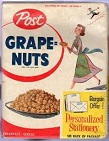
In 1891 after trying Independence, Kan., Fort Worth, Tex., and Europe, chronically-ill (hypochondriac?) Charles William "C.W." Post (1854-1914) of Springfield, Ill. moves to John Harvey Kellogg's Battle Creek Sanitarium in Battle Creek, Mich. for his health, and in 1895 invents Postum wheat-bran-molasses coffee substitute, founding Postum Cereal Co., which in 1925 acquires Jell-O Co., followed by Swans Down brand cake flour (1926), Minute brand tapioca (1926), Log Cabin syrup (1927), Baker's coconut (1927), Baker's chocolate (1927), and Maxwell House Coffee (1928); in 1897 he invents Grape Nuts brand cereal, which has neither grapes nor nuts in it, and becomes the first mass-marketed cereal; in 1929 the co. becomes Gen. Foods, for which Postum Co. pays $22M for a controlling interest, and in Nov. 1985 is acquired for $5.6B by Philip Morris Co., which acquires Kraft Inc. in 1990 to create Kraft Gen. Foods (KGF), which becomes Kraft again in 1995 - millions try to imagine eating grapes and nuts while crunching on wheat and barley?



In 1892 the Maxwell House Hotel in Nashville, Tenn. begins serving the special Maxwell House brand coffee blend invented by wholesale grocer Joel Owsley Cheek (1852-1935); Pres. Theodore Roosevelt later (Oct. 21, 1907) allegedly declares it "good to the last drop", which becomes the slogan; it goes on to capture one-third of the U.S. coffee market, and become the #1 seller in the U.S. until the late 1980s; in 1928 it is acquired by the Postum Co. (later called Gen. Foods).
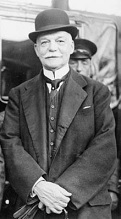
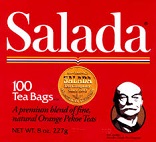
In 1892 Salada brand tea is founded in Montreal, Canada by Peter Charles Larkin (1855-1930) to sell tea packaged in foil, replacing tea chests, becoming popular and founding a new HQ in 1917 in Boston, Mass., known for large bronze doors depicting the history of the Ceylon tea trade designed by Henry Wilson; in 1969 it is acquired by Kellogg, who sells it in 1988 to Redco Foods.
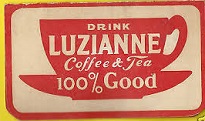
In Dec. 1902 Luzianne brand coffee is introduced by William B. Reilly of Monroe, La., followed in 1903 by Luzianne brand tea; in 1932 a blend formulated specially for iced tea is introduced, becoming their biggest seller; in the 1970s singer-actor Burl Ives stars in commercials.


In 1903 a team led by Ludwig Roselius (1847-1943) of Bremen, Germany invents the first commercially successful decaffeination process; in 1905-6 it is introduced in Germany under the name Kaffee HAG (Handeis-Aktien-Gesellschaft) (Coffee Trading Public Co.), and in France under the name Sanka (Fr. "sans caffeine" = without caffeine); in 1909-10 it is introduced to the U.S. under the name Dekafa (Dekofa); after WWI the Allies confiscate the co. and sell it to a U.S. co. along with the trademark rights, after which in 1923 Sanka brand decaffeinated coffee is first marketed in the U.S., becoming known for its bright orange label.
On Mar. 24, 1903 the first patent for the tea bag is granted to R.G. Lawson and M. McLaren in the U.S., made of open-mesh woven fabric and cotton thread; in June 1908 coffee-tea importer Thomas Sullivan of New York City begins shipping tea in silk pouches, which customers put directly in hot water, after which he switches to gauze.
In 1906 Belgium-born George Constant Louis Washington (1871-1946) of New York City invents Red E Coffee during a trip to Central Am., returning and marketing it in 1909, becoming the first mass-produced Instant Coffee.
In 1930 William Hermanson of Boston, Mass. patents the heat-sealed paper fiber tea bag, selling the patent to Salada Tea Co.

In 1932 Chock Full O'Nuts brand coffee is introduced in New York City by Russian immigrant William Black (Schwarz) (ca. 1902-83) based on his 18 shelled nut shops (opened in 1926) turned into lunch counters, offering a cup of coffee for 5 cents; in 1953 the brand is introduced to supermarkets; in 1957 Black hires former Brooklyn Dodgers star Jackie Robinson as vice-pres. to handle relations with his 90% African-Am. workforce; in 1999 the co. is acquired for $238M by Sara Lee Corp. who sell it in May 2006 to Massimo Zanetti Beverage USA.

On Apr. 1, 1938 the Nestle (Nestlé) Co. of Switzerland introduces Nescafe (Nescafé) instant coffee to solve the problem of a Brazilian coffee surplus.
In 1944 the rectangular porous paper tea bag is invented by ?.
In 1950 Dunkin' Donuts is founded in Quincy, Mass. by William Rosenberg, who started in 1948 with Open Kettle AKA Kettle Donuts, specializing in quick coffee and donuts for sugar junkies; in 1963 it expands to 100 locations, followed by to 11.3K in 36 countries by 2015; in Feb. 1990 it acquires rival Mister Donut.
In 1953 White Rose Redi-Tea is introduced by Seeman Brothers of New York City, becoming the world's first instant iced tea powder.
In 1956 Mister Donut fast food franchise is founded in the U.S. by former Dunkin' Donuts exmployee Harry Winokur, growing to 275 stores before being acqured by Internat. Multifoods Corp. in 1970 and expanding to Japan in 1971; in Feb. 1990 after expanding to 550 stores it is acquired by Allied Lyons, parent co. of Dunkin' Donuts.

In 1958 Juan Valdez is introduced as a marketing gimmick by the Nat. Federation of Coffee Growers of Colombia, portrayed by actor Jose F. Duval until 1969, then real-life Colombian coffee grower Carlos Sanchez until 2006, competing with Mrs. Olsen and her "Mountain Grown Folger's" commercials (purchased by Procter & Gamble in 1963); his trusty mule is named Conchita.
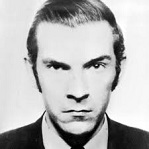
In 1962 after getting caught poisoning his family members and killing his stepmother, Neasen, London-born amateur chemist Graham Frederick Young (1947-90) is sent to Broadmoor Hospital; in Feb. 1971 he is released, allowing him to poison 70 more people, killing his 4th victim before being arrested on Nov. 21, 1971 and convicted in June 1972, being dubbed the Teacup Poisoner, after which he is shipped to Parkhurst Prison on the Isle of Weight, dying of a heart attack on Aug. 1, 1990.

In 1964 Tata Tea Ltd. is founded in Calcutta (Kolkata), West Bengal, India, growing to a 25% market share in India by 1999; in 2000 it acquires Tetley Group of the U.K.
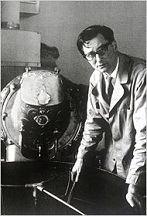
In 1966 Dutch immigrant Alfred H. Peet (1920-2007) founds Pete's Coffee & Tea in Berkeley, Calif., introducing custom coffee roasting to U.S. customers and going on to teach the 1971 founders of Starbucks, becoming known as "the Dutchman who taught America how to drink coffee".

In 1967 Donald Bain (1935-), later known for the "Murder, She Wrote" series anon. pub. Coffee, Tea, or Me?, "The uninhibited memoirs of two airline stewardesses"; the alleged memoirs of lusty young stewardesses Trudy Baker and Rachel Jones, whom he cooks up while working in public relations for Am. Airlines, after which the airline hires two stewardesses to pose as the authors for book tours and TV appearances; spawns the sequels "The Coffee Tea or me Girls' Round-the-World Diary" (1970), "The Coffee Tea or Me Girls Lay It on the Line" (1972), and "The Coffee Tea or Me Girls Get Away From It All" (1974).
On Jan. 15, 1969 Sanka brand freeze-dried coffee (97% caffeine-free) is introduced, with the ads harkening the viewer back to 1927 when instant coffee came on the market and fresh-brewed flavor was lost.

In 1970 Celestial Seasonings is founded in Boulder, Colo. by herb-flower nuts Mo Siegel (1951-), John D. Hay et al., who gather them from the local Flatirons in the Rocky Mts.; after major growth they are acquired by Kraft Foods in 1984.

Speaking of black, done white-style? On Mar. 31, 1971 Starbucks (named by Gordon Bowker after a char. in Herman Melville's "Moby Dick" - second choice Pequod) is founded in Seattle, Wash. at 2000 Western Ave. by three former students of the U. of San Francisco, incl. Gerald "Jerry" Baldwin, Zev Siegl (1955-), and Gordon Bowker, moving to 1912 Pike Place Market, starting out with whole coffee beans and expanding to expresso in 1986 before selling-out in 1987 to former employee Howard Schultz (1953-), launching Second Wave Coffee, introducing Italian-style espresso drinks to the U.S. and other countries, opening its first store outside North Am. in Tokyo, Japan in 1996, and growing to 23.5K locations incl. 12.9K in the U.S. by 2015; the logo is a mermaid or melusine on a green background (colors of their alma mater); in 2005 Russian atty. Sergei A. Zuykov (1966-) squats on their trade name, demanding $600K for it - that and $600K will get you a cup of coffee?

In 1972 Mr. Coffee automatic drip coffeemaker, invented by former Westinghouse engineers Edmund Angel Abel Jr. (1921-2014) and Edwin Schultz for North Am. Systems (NAS) of Cleveland, Ohio, founded by Vincent George Marotta Sr. (1924-2015) and Samuel Lewis Glazer (1923-2012) is introduced, making superior coffee to percolators, which often burn the coffee; in 1973 baseball star Joe DiMaggio becomes the spokesman, causing 1M units to be sold by Apr. 1974, gaining 50% of the U.S. coffee maker market by 1979; in 1994 it is acquired by Health O Meter Products (later Signature Brands USA), which in 1998 is acquired by Sunbeam Corp. (Am. Household Inc.), which in Jan. 2005 is acquired by Jarden.
In 1973 Massimo Zenetti Beverage Group is founded in Bologna, Italy, going on in 2006 to acquire MJB, Hills Brothers, Chase & Sanborn, and Chock Full O'Nuts for $82.5M from Nestle, growing to own 20+ consumer brands and operate the largest coffee plantation in the world in Brazil.
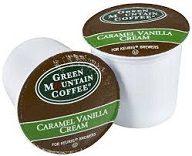
In 1990 Colby College roommates Peter Dragone and John Sylvan invent Keurig K-cups for single-cup coffeemaking, founding Keurig Green Mountain Co. in Waterbury, Vt. in 1992; in 1997 Sylvan sells out for $5K; in 1998 they introduce K-Cup pods, which become popular in offices, followed by homes, causing sales to grow to $4.7B by 2014, after which Sylvan publicly regrets inventing them because they're not recyclable.
In Jan. 1999 Starbucks opens its first outlet in tea-loving mainland China at the China World Trade Bldg. in Beijing; by May 2016 it has 2.1K stores in 102 cities.